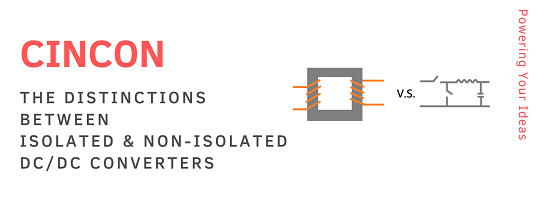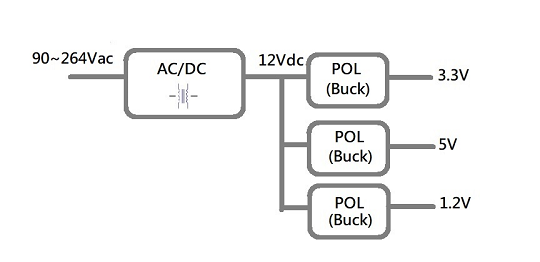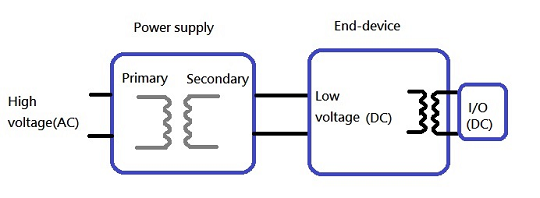 Premises:
Premises:
With the growing focus on enhancing efficiency and reducing size in power supply, the non-isolated design has emerged for consideration, exploring its potential applications. This article talks about the distinctions between Isolated and Non-isolated DC/DC converters, accompanied by examples of their application scenarios.
Non-isolated & Isolated – What’s the difference?
Three commonly used types of Non-isolated DC/DC converters include the Buck, Boost, and Buck-Boost converters. The Buck converter is extensively employed in Point-of-Load (POL) applications to convert higher voltages to lower ones. Conversely, the Boost converter elevates lower voltages to higher levels. The Buck-Boost converter integrates the advantages of both, enabling voltage regulation as required. Notably, all three non-isolated converters share a common characteristic: the absence of a transformer to isolate the input and output.
Isolated DC/DC converters, such as flyback, forward, half & full-bridge, and LLC, are prevalent. These converters utilize a transformer to separate the input (primary side) and output (secondary side). The turn ratio of the transformer allows these converters to operate without constraints on the input-to-output voltage.
Non-isolated & Isolated – Pros and Cons
Non-isolated converters can achieve higher efficiency through their simpler design and fewer components, particularly by excluding a transformer, which significantly reduces power loss. The compact design, a result of fewer components, also makes non-isolated converters more space-efficient.
However, safety concerns arise with non-isolated converters as the input and output are not isolated. This lack of isolation increases the risk of electrical shocks to end users upon contact with the unit case. Additionally, non-isolated converters may break down and short circuit from input to output under abnormal conditions, necessitating the addition of extra protection circuitry.
In contrast, isolated converters alleviate safety concerns since the input and output sides are separated by a transformer, ensuring different grounds for the primary and secondary sides. While isolated converters may not match non-isolated ones in terms of cost, efficiency, and size, their isolation feature is crucial in applications such as medical, military, and heavy industrial.
Non-isolated & Isolated – Application Scenario
Non-isolated converters find predominant use in Point of Load (POL) applications, where they convert from higher to lower voltage. The fully isolated function provided by the front-end stages obviates the need for isolation in the back-end POL. In numerous industrial applications, higher-wattage non-isolated DC/DC power is being employed in enclosed case environments. These systems feature a well-isolated front-end and utilize non-isolated converters in the back-end. The case enclosure fully covers the power supply, preventing end-users from making contact from the outside.

Fig. 1 Typical POL application
Isolated converters find notable application in scenarios such as medical applications. To adhere to insulation requirements for patients or operators, power supply designs must meet strict isolation standards. Moreover, the design is constrained by specific requirements for clearance and creepage.

Figure 2. Two-stage isolated structure in medical application
In applications with high voltages, such as in defense and heavy industry, there is a demand for power supplies with higher levels of isolation. This is crucial to mitigate potential hazards like electrical arcs or shocks during operation. Generally, higher operating voltages demands increased isolation requirements.
Cincon’s Power supply solution
Cincon offers a comprehensive range of compact and highly efficient isolated DC/DC converters suitable for diverse applications, ensuring safety compliance. For further details, feel free to reach out to us for support! – office@vitecpower.com



